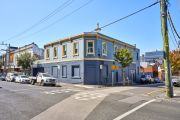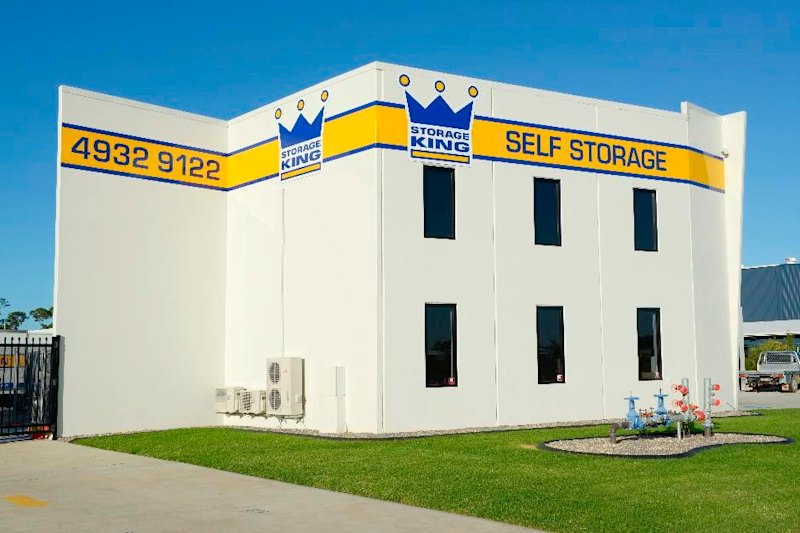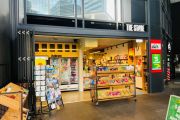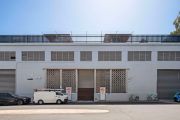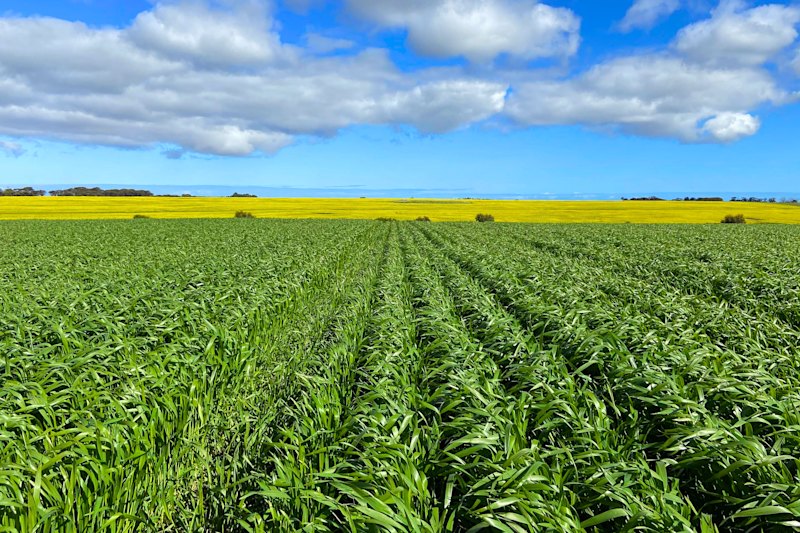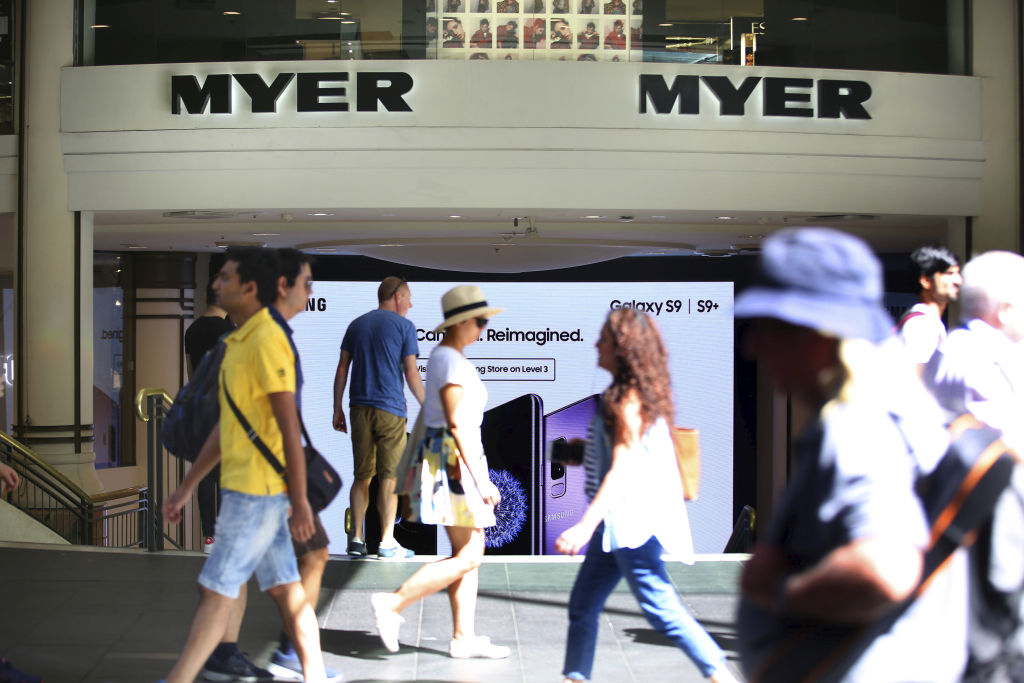
Aussie retail strip among world’s most expensive shopping destinations
A popular Australian retail strip has been named alongside the world’s most expensive retail destinations, with global rents on average nearly six per cent above pre-pandemic levels, according to Cushman & Wakefield.
In a list set to ruffle the black feathers of Melburnians, Sydney CBD’s Pitt Street Mall has surpassed all other Australian places to make eighth place on the global Top 10 Main Streets Across the World list.
The global commercial real estate services company’s report, now in its 34th year, weighs up the eye-watering cost of rents across 138 best-in-class urban global retail destinations, many of which are linked to the luxury sector.
The crown for world’s most expensive retail destination was given to Milan’s Via Monte Napoleone, where rents have risen by nearly a third in the past two years. The luxury strip, known for its fashion, benefited from tight supply and strong retailer demand and the euro’s appreciation against the US dollar.
Across the 138 locations tracked, rents rose in 57 per cent (79), dropped in just 14 per cent (19), and 29 per cent (40) remained flat. Competitive tension for limited space saw a global average rental increase of 4.4 per cent year-on-year.
Pitt Street Mall, a pedestrian-only section of Pitt Street running around 200 metres from Market Street to King Street, is lined with brands like Myer, Tag Heuer, Aesop, Zara and Nike. It also boasts the Westfield Sydney shopping centre, where the cashed-up flock for designer labels such as Gucci, Burberry, Balenciaga, Jimmy Choo and Prada.
The only Australian strip in the global Top 50, it held its position at eighth spot for a second consecutive year, with rent charged at or $US802 a square foot ($75 a square metre).
The news comes comes as Australia’s big shopping centres have been the quiet performers of the year.
Despite the cost of living pressures and the challenge of online shopping, retail rents are now rising in the best centres, and, as the long-term falls in value stabilise, total returns in the malls have bettered those in the office towers or, surprisingly, in logistics.
Across the Asia-Pacific region, three Australian cities made Cushman & Wakefield’s Top 50 APAC list.
Pitt Street Mall outshone the others at sixth place, moving down from fifth spot last year. Melbourne’s Bourke Street – a similar pedestrian-only strip shared with trams – ranked 17th, up from 18th, with a rent of $US353 a square foot. Up the coast, Brisbane’s Queen Street Mall remained stable as the 25th most expensive at $US212.
Cushman & Wakefield’s head of international research, Dr Dominic Brown, said prime retail space was becoming increasingly scarce in Sydney, and he found retailers were seeking high-profile locations beyond traditional main streets.
“In Sydney, we’re seeing elevated demand for sections of Castlereagh and George Streets, particularly around iconic intersections like King and Pitt streets, which offer unparalleled visibility and foot traffic,” Brown said.
“We’re witnessing a remarkable diversification of retailers on main streets, with brands like IKEA making bold moves into high-profile locations such as [London’s] Oxford Street and Upper 5th Avenue [in New York]. This trend is mirrored on Pitt Street, where we see a mix of fashion, sports and general goods retailers thriving, while King Street continues to solidify its position as a hub for luxury brands.”
Swiss luxury brand Longines has opened a new 138 square-metre boutique in Westfield Sydney, highlighting the strategic use of available space and the alignment with their brand positioning.
“Meanwhile, Chanel’s commitment to a new space underscores the continued confidence of luxury retailers in Australia’s premium retail precincts,” Brown said.
The most expensive area on the APAC Top 10 list are “main street shops” in Hong Kong’s Tsim Sha Tsui. The Chinese region also snatched a further two spots; second place for the main shops in Causeway Bay, and seventh for its Central shopping spot.
Four Japanese strips featured in the APAC Top 10 list, including three in Tokyo and one in Osaka, defying weak growth conditions across the nation. After four stable years, rents moved higher in 2024, led by Ginza in third position with 25 per cent year-on-year growth, while Osaka’s Midosuji recorded nine per cent rent growth, coming in at fifth. Other popular strips in Tokyo were Omotesando, which ranked fourth, while Shinjuku was eighth.
John Siu, Hong Kong managing director at Cushman & Wakefield, said he was pleased to see the Chinese region hold its position as one of the top retail destinations globally.
“This achievement underscores the resilience and attractiveness of Hong Kong’s retail market, even amid a challenging business landscape,” Siu said.
“Looking ahead, we expect to see more leasing activities and an increasing importance of Chinese mainland brands and retailers entering the Hong Kong retail market, using it as a stepping-stone to promote their brands on the international stage.”
Rents closely reflected wider macroeconomic performance within the region, the report found, with India having the strongest major economy in the world this year. Rental growth across 16 tracked Indian locations averaged a nine per cent increase year-on-year.
The retail destination Indiranagar 100 Feet Road in Bengaluru (also called Bangalore), led India’s rental growth at 32 per cent year-on-year. The bustling street is located the capital and largest city of the southern Indian state of Karnataka, with a population of more than 8 million.
The most affordable retail location in APAC is Anna Nagar 2nd Avenue in Chennai, India, where rent is $US25 a square foot.
The largest rental decline in the last year was recorded in the Xinjiekou area of Nanjing, China, which was down 23 per cent to $US369.
Via Monte Napoleone overtook New York’s Upper 5th Avenue, with London’s New Bond Street in third place on the global list.
Other cities in the global Top 10 include Tsim Sha Tsui (main street shops) in Hong Kong at fourth, Paris’s Avenue des Champs Elysees at fifth, Tokyo’s Ginza at sixth, Zurich’s Bahnhofstrasse at seventh, as mentioned, Sydney at eighth, Seoul’s Myeongdong at ninth, and Vienna’s Kohlmarkt at 10th.
Via Monte Napoleone is the first European shopping street to top the rankings, having steadily climbed the rankings in recent years, reaching second for the first time in 2023. Rents rose 11 per cent to $US2047 a square foot in the past 12 months, whereas on Upper 5th Avenue, landlords fetched $US2000 – remaining steady for a second consecutive year.
Regionally, the Americas performed strongest with an 8.5 per cent rental increase, driven by growth of almost 11 per cent – more than double the 5.2 per cent recorded last year. Europe followed, with Asia Pacific at 3.5 per cent and 3.1 per cent respectively.
Meanwhile, Brown noted how tourism continued to drive a significant share of luxury retail sales, with 40-50 per cent of luxury goods bought while travelling.
The report found 790 million tourists travelled internationally between January and July this year, which is 11 per cent higher than last year, and just four per cent less than before the pandemic in 2019.
“Over 630,000 international visitors arrived in Australia in the 12 months to September 2024, a number just shy of pre-pandemic levels in 2019,” Brown said. “As tourism numbers continue to recover, this should further boost performance of Australia’s super-prime retail destinations.”
Brown said the performance of prime retail destinations would rise along with discretionary spending.
“How quickly and strongly that feeds through into rental growth at a market level will vary due to local nuances and market dynamics,” he added.
“Growth at a global and regional level was led by the US this year, but every region had really strong double-digit growth in certain markets – truly exceptional in some cases – and others where rents have slipped for one reason or another.
“However, performance at the very top end underlines that the strength of ‘prime’ continues to rise and we expect that to continue as conditions improve.”
Robert Travers, head of EMEA retail at Cushman & Wakefield, said intense competition for space and extremely limited supply characterised these streets, despite challenging market conditions.
“Brands, from luxury to mass market, are doubling down on their physical stores in the top locations as competition for consumer attention drives the need for a superior shopping experience and product showcase,” he said.
“While e-commerce plays a role in an omni-channel strategy, it is the physical embodiment of the brand that customers connect with. As a result, vacancy rates remain exceptionally tight which translates into the rents that retailers are willing to pay to secure and retain their space.”
